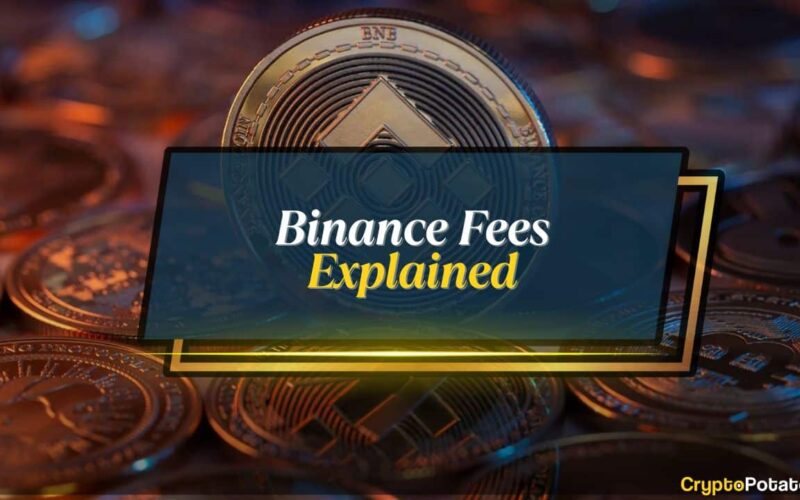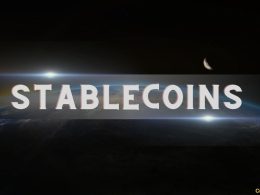This guide will break down all the major Binance fees, explain how they are calculated, and share practical tips to help you save money.
Understanding these costs will allow you to trade smarter, keep more of your funds, and make informed decisions with every transaction.
Of course, if you’re new to Binance, I suggest you have a look at our comprehensive reviews and guides:
Key Takeaways:
- Binance is the largest crypto exchange in terms of volume and active users.
- The exchange charges different types of fees that vary by transaction type, account level, and more.
- Traders can reduce costs by paying with BNB, using limit orders, and following other tips included in the article.
- Hidden costs, such as slippage, liquidity, and conversion rates, can also impact the overall trading outcome.
Binance is a crypto exchange founded by a software engineer, Changpeng Zhao (popularly called CZ), in 2017. Although the crypto exchange debuted at a time when several other exchanges were saturating the market, Binance soon garnered significant attention due to various reasons, including quick token listings and competitive fees. Today, the crypto custodian boasts over 289 million users globally.
The team behind Binance also launched a layer-1 blockchain, known as BNB Chain, alongside a native coin called Binance Coin (BNB). Holding this coin grants access to specific privileges within the Binance exchange.
As partners of Binance, CryptoPotato readers can receive additional fee discounts and an exclusive $600 voucher in 2025. Use this link to register, verify your account, and complete the tasks to get up to $600 free.
Table of Contents
Understanding Binance Fees
Binance charges different fees depending on the type of transaction, your account level, and trading activity. At first, these fees may seem confusing, but breaking them into categories makes them easier to understand. The main types include:
- Trading Fees: These are charges when you buy or sell crypto on spot or futures markets.
- Deposit and Withdrawal Fees: Fees apply when you deposit funds into Binance or withdraw them, whether in fiat or crypto.
- Margin Fees: Interest charged when you borrow funds for margin trading.
- Peer-to-Peer (P2P) Fees: Costs involved when trading directly with other users.
- Other Fees: Occasional charges may occur for token launches, staking, or special services.
Each type works differently, so understanding them helps you make smarter trading decisions. They also let you plan trades better and avoid unexpected costs. Now, let’s break down each of these fees.
Spot Trading Fees
Spot trading refers to buying or selling the underlying cryptocurrencies directly, rather than a derivative. In other words, when you purchase spot, you can also then transfer these assets to your private wallets. On Binance, traders are classified as makers or takers, depending on how their orders interact with the market:
- Maker: Your order contributes to the order book, increasing the market’s options. For example, if you place a limit order to sell BTC at a price higher than the current market price, it doesn’t execute immediately. You are “making” the market, so you pay a maker’s fee, which is usually lower.
- Taker: Your order is filled immediately by matching someone else’s order. For example, if you place a market order to buy BTC at the current price, you are “taking” from the market. You pay a taker fee for this, which is usually slightly higher.
Tip: Think of it like a marketplace. Makers post items for others to buy, and takers purchase the items immediately.
By default, Binance charges 0.1% per trade for both makers and takers. It may seem small, but frequent trading can add up. For example, if you buy 1 BTC at $30,000 as a taker, you would pay a fee of $30.
Remarkably, you can lower this fee by paying with BNB. Binance automatically gives a 25% discount if you use BNB.
Futures Trading Fees
Futures trading allows you to speculate on cryptocurrency prices without actually owning the underlying asset. Binance offers two main futures types:
- USDT-Margined Futures (USDT-M): These contracts are settled in USDT, a stablecoin.
- Coin-Margined Futures (COIN-M): These contracts are settled in the cryptocurrency itself.
Futures fees are generally lower than spot trading fees:
- USDT-M Futures: Maker 0.02%, Taker 0.05%
The image below is an overview of the fee rate applicable to the USDT-M Futures:
- COIN-M Futures: Maker 0.01%, Taker 0.05%
The image below is an overview of the fee rate applicable to the COIN-M Futures:
Funding Rates
Futures contracts also include funding rates, which are periodic payments between buyers and sellers. These keep perpetual contracts close to the spot market price. Funding rates can be positive or negative and usually occur every 8 hours.
When the funding rate is positive, traders holding long positions pay those holding short positions. When the funding rate is negative, short positions pay long positions. This mechanism balances demand and prevents significant price gaps between futures and spot markets. For example, if your position size is $10,000 and the funding rate is 0.01%, the fee is $1. You would pay this amount if you are long, or receive it if you are short.
Like spot trading, futures fees can be reduced by paying with BNB or reaching higher VIP levels. Traders should closely monitor funding rates, as frequent changes can significantly impact costs.
Options Trading Fees
Binance offers European-style vanilla options, which let you buy or sell call and put contracts. These work differently from futures and come with special fees:
- Options Premium Fee: This is the upfront cost you pay when buying an option—the price changes based on volatility, strike price, and expiry date.
- Exercise Fee: If your option ends in the profit zone and you exercise it, Binance charges a small additional fee.
- Maker and Taker Fees: These apply when you provide or take liquidity in the options market. Maker fees start at 0.02%, while taker fees start at 0.03%.
Below are the applicable fee rates for regular and VIP users, as outlined in the Options trading section:
Because you pay premiums upfront, frequent use of options can become costly. Keeping an eye on strike prices and expiry dates helps you avoid unnecessary expenses.
Deposit and Withdrawal Fees
Have you ever considered the cost of deposits and withdrawals? These fees are easy to overlook but can add up, especially if you frequently move large amounts.
Fiat Deposits
- Bank transfer: Typically free or at a very low cost.
- Card payments: Typically 1–3%, depending on the provider.
- Third-party services (e.g., Simplex, Banxa): Fees vary and can be high at times.
Crypto Deposits and Withdrawals
- Deposits: Deposits are typically free, although most blockchain networks charge a small miner’s fee.
- Withdrawals: Fees vary depending on the cryptocurrency and the network you select. It’s important to note that this is not a Binance-imposed fee, but rather a network fee that cannot be tossed.
Below is an image showing the overview of the fee rates for the Deposit/Withdrawals section. It also shows the tokens’ network and names:
Margin and P2P Fees
Margin Trading
Margin trading allows you to borrow funds to increase your trade size and potentially amplify your profits.
Binance charges daily interest on borrowed funds. Interest compounds until the loan is repaid, so paying it back quickly can save you money. For instance, if you borrow $5,000 at a daily interest rate of 0.02%, the cost is $1 per day. Because interest accumulates daily, prompt repayment reduces overall costs.
Below is the image displaying the fee rates for the Spot and Margin trading markets:
Peer-to-Peer (P2P) Trading
P2P trading lets you buy or sell crypto directly with other users, usually in fiat.
- Buying: Generally free
- Selling: Small fees may apply
P2P trading is ideal for users seeking lower fees and more flexible payment options. Notably, you can save money by using promoted payment methods that charge lower fees. It also helps to complete transactions quickly to avoid extra charges.
NFT Trading Fees
The Binance NFT Marketplace lets you buy, sell, and even create NFTs. Like other platforms, it comes with some fees:
- Trading Fee: Binance takes a 1% fee on every NFT sale, whether you are buying or selling.
- Royalty Fees: NFT creators can set royalties of up to 10%, which are added to every secondary market sale. This is not up to Binance.
- Minting Fees: When creating NFTs, you may pay blockchain network fees. These depend on the chain, such as BNB Chain or Ethereum.
Below is an image of the applicable fee rates for the NFT trading section:
When pricing NFTs, remember to factor in both marketplace fees and creator royalties to avoid unexpected costs.
How to Save on Binance Fees: Practical Advice
Binance fees are already low, but a few simple strategies can help you save even more:
- Pay with BNB: Turn on the BNB fee discount to instantly reduce trading costs.
- Use Staking or Savings Programs: Some Binance programs offer lower fees or provide additional perks.
- Use Limit Orders: Maker orders usually cost less than taker orders, helping reduce overall fees.
- Combine Trades and Withdrawals: Batch small trades or withdrawals into a single transaction to avoid paying multiple fees.
- Choose Low-Fee Networks: Use networks like BEP-20 instead of ERC-20 to withdraw crypto and save money.
- Avoid Congested Networks: Even reputable networks can become congested due to excessive usage in the crypto market. Binance often notifies users when a network is congested. This way, you can avoid wasting time and funds on these high-traffic blockchains
- Increase Your VIP Level: By achieving higher trading volumes and holding BNB, you can unlock lower fees for spot and futures trades.
VIP Levels for Fee Reduction
Binance has a VIP system for active traders. Higher trading volumes and larger BNB holdings result in lower fees.
- VIP 0: Standard fee 0.1%
- VIP 1: Maker 0.09%, Taker 0.1%
- VIP 9: Maker 0.01%, Taker 0.02%
High-volume traders benefit a lot, as small fee reductions add up over many trades.
Hidden Costs You Should Watch
Even after applying all fee-saving strategies, some costs remain less obvious. Understanding these helps you trade smarter and avoid unexpected expenses:
- Slippage: The executed price may differ slightly from your expected price, resulting in small additional costs.
- Liquidity: Coins with low trading volume have wider spreads, which raise effective fees.
- Futures Funding Rates: Periodic payments for futures positions can incur additional costs if not carefully timed.
- Conversion Fees: Swapping one cryptocurrency for another may incur additional charges.
Being proactive about these hidden costs can significantly improve your trading efficiency and net outcomes.
Practical Examples of Binance Fees
Seeing real-life scenarios makes understanding Binance fees much easier. The examples below illustrate the actual fees you would incur for various trades and withdrawals, excluding any additional hidden costs.
Spot Trading
Suppose you buy 2 ETH at $1,800 each using a market order:
- Total Trade Cost: 2 × $1,800 = $3,600
- Trading Fee (0.1% taker): $3.60
- With BNB Discount (25%): $2.70
Total Fees Paid: $3.60 (or $2.70 if using BNB).
Futures Trading
Imagine going long on BTC-USDT at $30,000:
- Maker Fee: 0.02% = $6
- Funding Rate (small periodic payment every 8 hours to keep prices aligned): 0.01% × $30,000 = $3
Total Fees Paid: $9
Margin Trading
Suppose you borrow $5,000 to trade ETH at a daily interest rate of 0.02%:
- Daily Interest: $5,000 × 0.02% = $1 per day
- Total Interest (3 days): $3
Conclusion
Binance fees vary depending on the transaction type, account level, and the specific network used.
That said, the fees tend to be on the lower end of the competitive spectrum, especially if you take advantage of VIP tiers and pay with BNB.
It’s critical also to consider hidden costs, such as slippage, liquidity, and conversion charges, which also impact outcomes. By consolidating trades, selecting low-fee networks, and monitoring funding rates, you can effectively manage expenses.
Understanding these details ensures you trade more efficiently and avoid unnecessary costs.
Binance Free $600 (CryptoPotato Exclusive): Use this link to register a new account and receive $600 exclusive welcome offer on Binance (full details).
LIMITED OFFER for CryptoPotato readers at Bybit: Use this link to register and open a $500 FREE position on any coin!
Source link









